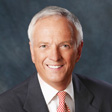Financial Advisers: Don’t Follow the Rules, Follow the Principle
A person who drives 55 mph in a blinding snowstorm is following the rule, while ignoring the principle of safety. It’s the same with investment advice.


Many of us are likely familiar with the accounting world’s Rules vs. Principles ethics regulation. But you may not be aware that the Department of Labor, since promulgating its fiduciary rule last year, has implemented a similar type of principle-based regulatory approach. Within the financial adviser world, much of the debate over the so-called fiduciary rule has been centered on this approach.
But as a client, whether you are aware of this debate or not, the question becomes: Why should you care?
Rules-Based vs. Principles-Based Regulation
Let’s begin by unpacking what a rules-based vs. principles-based regulatory environment looks like. By analogy, the classic example of rules vs. principles comes to us via speed limits. According to a 2007 American Business Law Journal explanation, a rule says, “Do not drive faster than 55 mph.” A principle in the same scenario will say, “Do not drive faster than is reasonable and prudent in all circumstances.”
From just $107.88 $24.99 for Kiplinger Personal Finance
Become a smarter, better informed investor. Subscribe from just $107.88 $24.99, plus get up to 4 Special Issues

Sign up for Kiplinger’s Free Newsletters
Profit and prosper with the best of expert advice on investing, taxes, retirement, personal finance and more - straight to your e-mail.
Profit and prosper with the best of expert advice - straight to your e-mail.
Rules provide black-and-white clarity that may not always be reasonable in certain circumstances — e.g., a snowstorm where driving 55 mph on the same road would prove hazardous. In this way, a principle is a bit more vague, but also more encompassing and reflexive to various scenarios that a rule may not have envisioned. It’s like a blade of grass in a hurricane that will bend in most circumstances, whereas a rule is like a branch that may break in the same storm due to its rigidity.
Traditionally, financial services regulation has been rules-based by the Financial Industry Regulatory Authority (FINRA), the Securities and Exchange Commission (SEC) and legal statute (e.g., Dodd-Frank or Sarbanes-Oxley). A rule regulating financial advisers may clearly say that it is illegal to trade on inside information, which is further clearly defined by these codified statutes and laws. This gives a very clear regulatory and legal framework for advisers and investment professionals to avoid bad behavior while at the same time pursuing informational advantages for themselves and their clients that allow them to remain good actors.
Under the Department of Labor’s fiduciary rule, a principles-based approach now requires financial advisers (especially those regulated under ERISA and the Investment Advisers Act of 1940 in their dealings with retirement plan sponsors) to be a bit more interpretive and live with a bit more ambiguity. As an example, under the fiduciary rule, advisers are required to act in the “best interest” of their clients. What does this really mean?
Clearly it means that an adviser cannot engage in activities that are contrary to the best interest of their client lest they breach their fiduciary duty. As an example, it would not be in a client’s best interest for their adviser to engage in excessive trading that racks up a series of fees. But what is the definition of excessive trading in the context of “best interest”? And what if, at the time the trades took place, there was a good-faith basis for engaging in non-usual patterns of trading? The end result may still be higher-than-usual trading fees for the client, but the adviser may have had a rationale behind that at the time. If those trades don’t work to the ultimate advantage of the client despite the good-faith basis, did the adviser not act in their best interest? And, as such, did the adviser breach their fiduciary duty?
As you’re beginning to see, the vagaries of a “best interest” rule can leave much up to interpretation and in the gray area that lawyers, jurists, regulators and politicians love. The financial services industry, on the other hand, abhors shades of gray and prizes certainty above all else.
Why Believe in Principles?
In the opinion of the Committee for the Fiduciary Standard (an industry group helping guide the fiduciary rule’s implementation and setting a standard for fiduciary duty within the industry), a principles-based approach is most appropriate. Even though a principles-based approach may mean certain vagaries for advisers, these same vagaries correctly force advisers to err on the greater side of caution to ensure they are acting in the client’s best interest.
And here we arrive at the heart of the matter and why you, as a client or potential client of a financial adviser, should care about this debate. In a rules-based world, advisers become complacent to merely check the box. “The DoL, FINRA or SEC said do this, so I’m doing that, and in this way I am compliant.” In the same way that driving down a highway in a snowstorm at 55 mph may not be technically violating the law, checking the box by adhering to rules does not always mean a best-interest outcome for those in the car.
Stretching our speed limit analogy, it is important to note that most states also have implicit principles about driving in hazardous conditions that impose a duty of reasonable prudence on drivers, despite what the explicit highway road signs say. That is to say that you should reduce your speed when conditions are hazardous. This is a principles-based approach that still has consequences for violation, but leaves open what exactly constitutes a “hazardous condition.” It is still a bit vague, but hardly anyone would challenge its necessity, and most true good actors would err on the side of caution to ensure the safe arrival of themselves, their passengers and their vehicles. Why take unnecessary risk?
In the world of financial advisers, imagine that going 55 mph in a snowstorm was the equivalent of an adviser needing to only provide a client with suitable investment options — decoupled from an elevated duty of care and diligence to ensure that those options were obtained for the lowest possible fee. The adviser was going 55 mph and not technically violating the law in a rules-based system. However, in a principles-based system, that same adviser is now held to a standard of what is not merely “suitable” but what is in fact in the “best interest” of that client. Now, rather than going 55 mph in a snowstorm, the adviser is required to slow down to a prudent and reasonable level and provide that same investment lineup with documented diligence on optimizing performance for the lowest fees available.
To conclude our analogy, which driver would you rather be with on that snow-besotted highway? The one clipping along at 55 mph on icy roads or the one tapping the brakes to ensure you reach your destination safely and in the best manner possible? We would highly caution for the latter, especially when you, as a plan sponsor (in our driving analogy a passenger in the car) may reap the same consequences as your adviser for their imprudent behavior.
How to Ensure You’re Working With a Principles-Based Adviser?
The best way to ensure that your adviser is acting in adherence with a principles-based system is to engage only with a true fiduciary. Working with a fee-only, independent and unconflicted true 3(38) fiduciary — especially those who obtain the Centre for Fiduciary Excellence, LLC (CEFEX) certification and thus adhere to its high level of ongoing scrutiny — is equivalent to getting in the car with drivers who will always err on the side of safety when driving down a snowy highway. CEFEX is an independent certification organization that works closely with industry experts to provide comprehensive assessment programs to improve the fiduciary practices of investment stewards, advisors, recordkeepers, administrators and managers.
The primacy of working with a true fiduciary has never been more evident than in the recent era of breach of fiduciary duty lawsuits levied against plan sponsors. While most of our conversation here has been about a breach of fiduciary duty by an adviser, it needs to be underscored that other plan fiduciaries, especially those involved in selecting the investment adviser, may also be found liable for this same breach — especially if a 3(21) fiduciary is involved.
As we have said several times before, the complexities, vagaries and nuances of fiduciary rules under ERISA, combined with the severe consequences for even inadvertent violation, seem to mandate work with a true and knowledgeable fiduciary.
Joseph F. Bert, CFP®, AIF®, the Founder of Certified Financial Group, Inc., has been in the financial planning profession since 1976. He is also President of Certified Advisory Corp. Joe is a CERTIFIED FINANCIAL PLANNER™ professional and a member of the Financial Planning Association where he served as its President and Chairman of the Central Florida Chapter.
Profit and prosper with the best of Kiplinger's advice on investing, taxes, retirement, personal finance and much more. Delivered daily. Enter your email in the box and click Sign Me Up.

Joe Bert, CFP® is the Chairman and CEO of Certified Financial Group, Inc. and has been in the financial planning profession since 1976. Joe can be heard every Saturday in Orlando, FL on News 96.5 FM at 9:00 a.m. EST hosting On the Money and seen twice weekly on the Fox TV affiliate, WOFL Fox 35. An experienced and knowledgeable financial planning practitioner, he has been affectionately referred to as the "Oracle of Orlando®" by his audience.
-
 Your Year-End Tax and Estate Planning Review Just Got Urgent
Your Year-End Tax and Estate Planning Review Just Got UrgentChanging tax rules and falling interest rates mean financial planning is more important than ever as 2025 ends. There's still time to make these five key moves.
-
 What Makes This Business Successful? The Founder's Kids Share
What Makes This Business Successful? The Founder's Kids ShareThe children of Morgan Clayton share how their father's wisdom, life experience and caring nature have turned their family business into a respected powerhouse.
-
 Stocks Struggle Ahead of November Jobs Report: Stock Market Today
Stocks Struggle Ahead of November Jobs Report: Stock Market TodayOracle and Broadcom continued to fall, while market participants looked ahead to Tuesday's jobs report.
-
 Your Year-End Tax and Estate Planning Review Just Got Urgent
Your Year-End Tax and Estate Planning Review Just Got UrgentChanging tax rules and falling interest rates mean financial planning is more important than ever as 2025 ends. There's still time to make these five key moves.
-
 What Makes This Business So Successful? We Find Out From the Founder's Kids
What Makes This Business So Successful? We Find Out From the Founder's KidsThe children of Morgan Clayton share how their father's wisdom, life experience and caring nature have turned their family business into a respected powerhouse.
-
 Past Performance Is Not Indicative of Your Financial Adviser's Expertise
Past Performance Is Not Indicative of Your Financial Adviser's ExpertiseMany people find a financial adviser by searching online or asking for referrals from friends or family. This can actually end up costing you big-time.
-
 I'm a Financial Planner: If You're Not Doing Roth Conversions, You Need to Read This
I'm a Financial Planner: If You're Not Doing Roth Conversions, You Need to Read ThisRoth conversions and other Roth strategies can be complex, but don't dismiss these tax planning tools outright. They could really work for you and your heirs.
-
 Could Traditional Retirement Expectations Be Killing Us? A Retirement Psychologist Makes the Case
Could Traditional Retirement Expectations Be Killing Us? A Retirement Psychologist Makes the CaseA retirement psychologist makes the case: A fulfilling retirement begins with a blueprint for living, rather than simply the accumulation of a large nest egg.
-
 I'm a Financial Adviser: This Is How You Can Adapt to Social Security Uncertainty
I'm a Financial Adviser: This Is How You Can Adapt to Social Security UncertaintyRather than letting the unknowns make you anxious, focus on building a flexible income strategy that can adapt to possible future Social Security changes.
-
 I'm a Financial Planner for Millionaires: Here's How to Give Your Kids Cash Gifts Without Triggering IRS Paperwork
I'm a Financial Planner for Millionaires: Here's How to Give Your Kids Cash Gifts Without Triggering IRS PaperworkMost people can gift large sums without paying tax or filing a return, especially by structuring gifts across two tax years or splitting gifts with a spouse.
-
 'Boomer Candy' Investments Might Seem Sweet, But They Can Have a Sour Aftertaste
'Boomer Candy' Investments Might Seem Sweet, But They Can Have a Sour AftertasteProducts such as index annuities, structured notes and buffered ETFs might seem appealing, but sometimes they can rob you of flexibility and trap your capital.